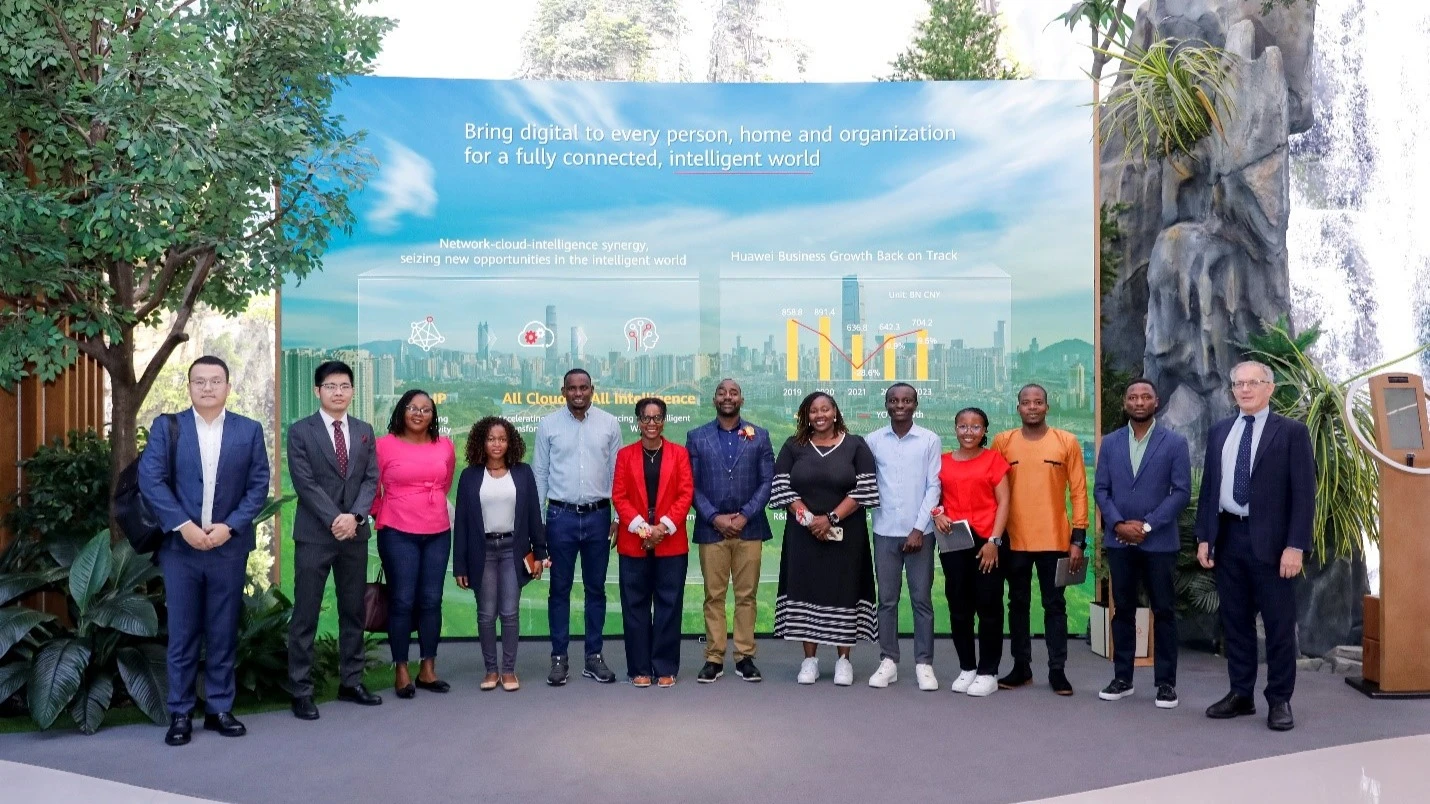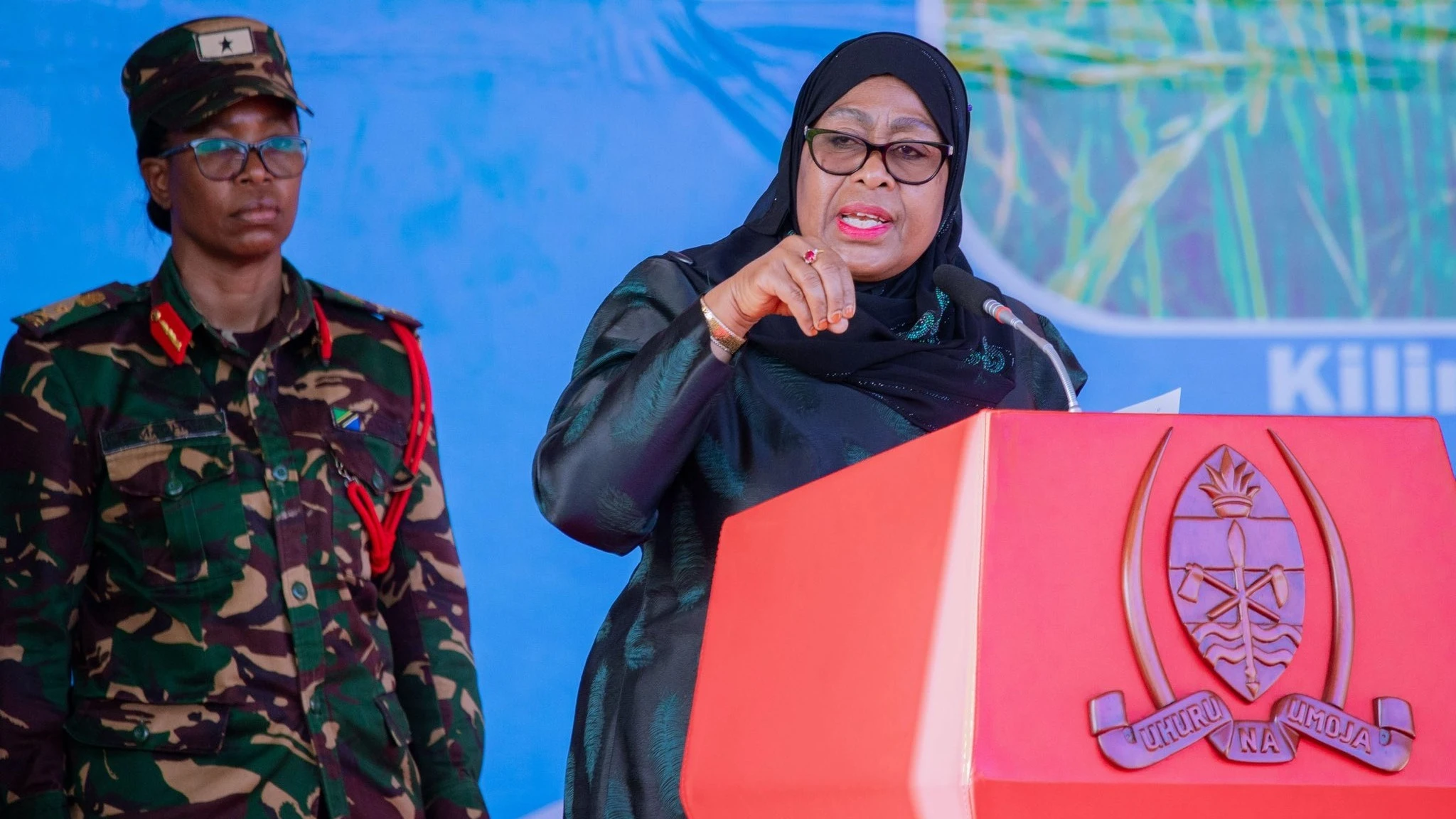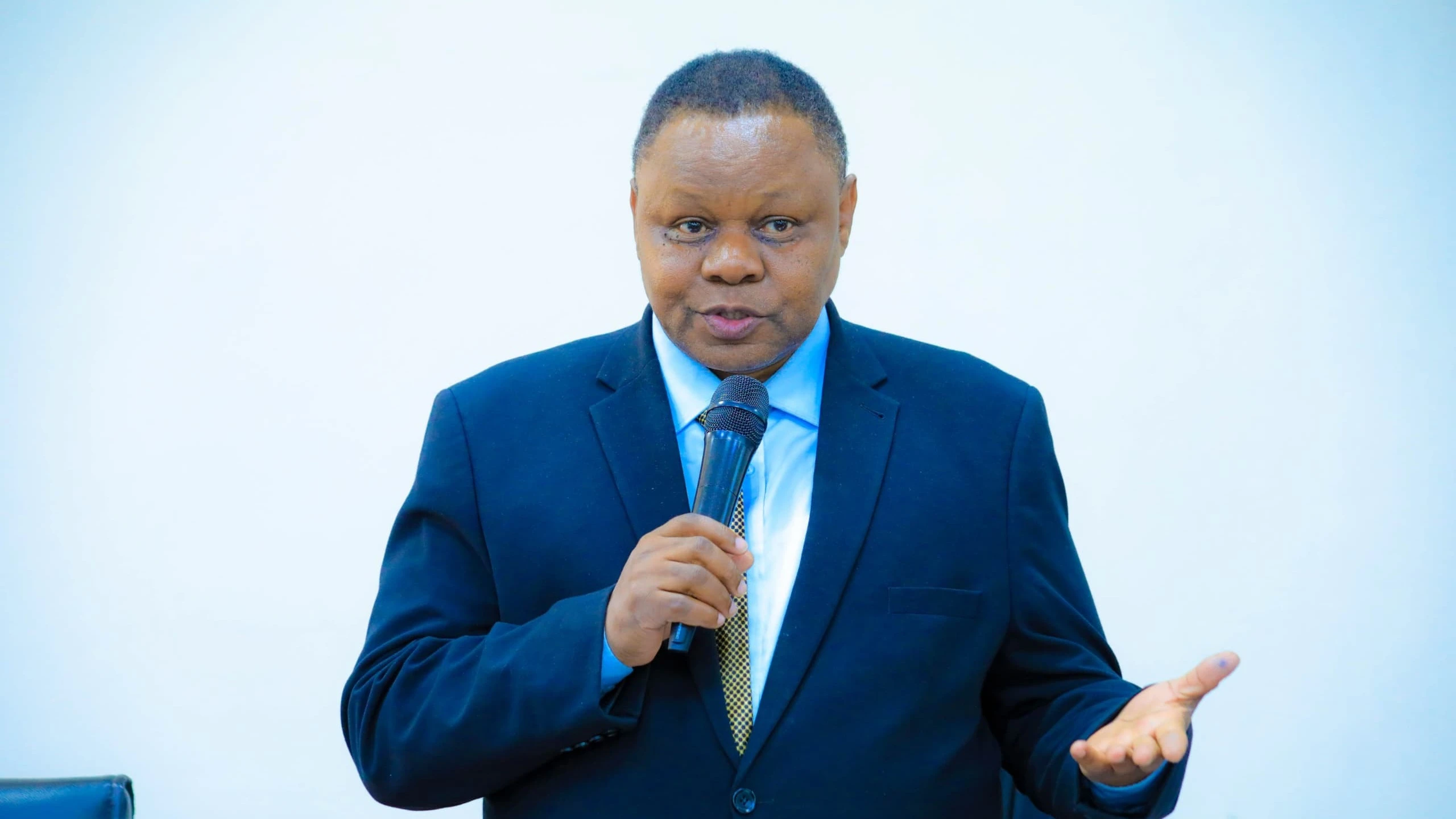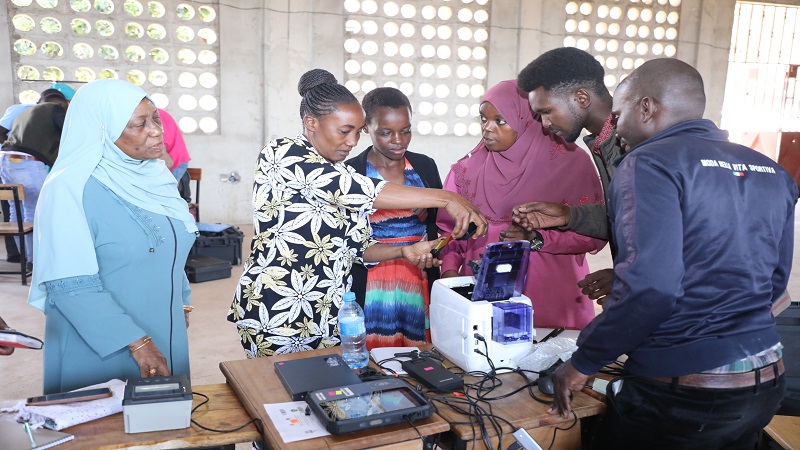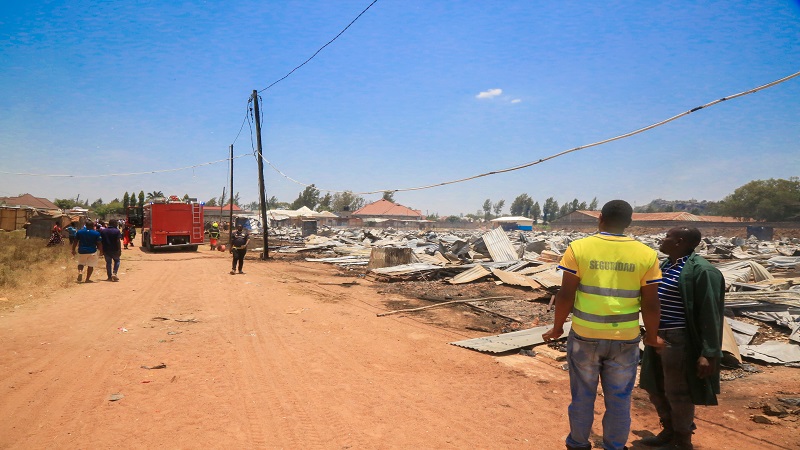Lost hopes over tragic fire incidents on SME markets
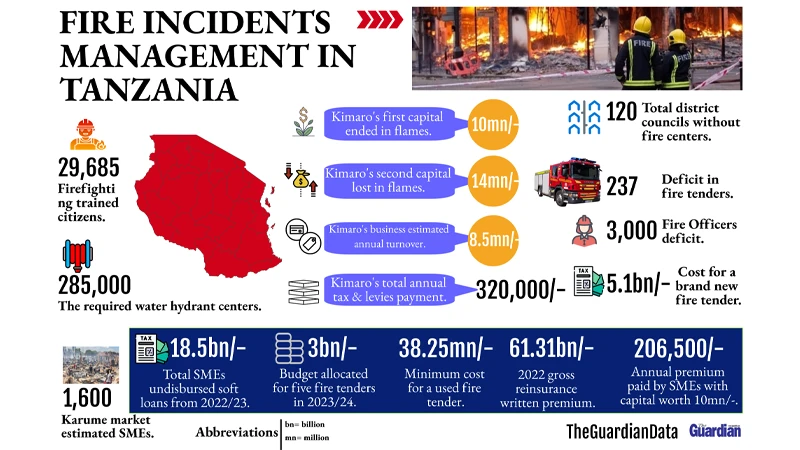
THE Fire and Rescue Force is losing the public trust.
Its low capacity to respond against fire incidents that break in various places, from homes, schools to business premises, causing loss of lives and properties; leaves more questions than answers.
Two years ago, Husna Kimaro (34), a mother of two, resident of Kigogo suburb in Dar es Salaam lost her female garments business that was burned to ashes at Mchikichini secondhand garments Small and Medium Entrepreneurs (SMEs) market well known in its Kiswahili name as Karume market.
It was around 3:23am, 08thApril, 2022, when Kimaro received a call from her friend Hamisa informing her that the market was burning; so she had to rush to the scene to find out what she could save.
Accompanied by her husband, they then rushed to the area, where they found the whole market being covered by thick black smoke.
She has operated the new business for nearly three months, since the first fire incident that burned down the same market on January 16, 2022, when her business worth of 10m/- was completely destroyed.
Kimaro has been in business since 2018. At the start, her business generated an estimated annual profit of 3.5m/-, until 2021 when she managed to purchase a three acres land at Kiluvya in Coast region, at a price of 10m/-.
Before the first fire incident, she had started constructing a three bedroom house with her husband who works as a truck driver between Dar es Salaam and Zambia.
“I really recall that bad day, because I had just bought new products worth 2.7m/- , which were all kept in a store. My capital for the second business was 14m/-,” said Kimaro.
She re-established the business from her and husband’s savings after the second fire incident. She complained that with all the efforts by over 300 SMEs who had already arrived at the incident, calling the fire and rescue emergency desk at the Ilala center; it took almost three hours for them to arrive.
“The fire rescue team came late with a lot of excuses. They said the fire tenders were not filled with water, after they received information about the incident,” she explained.
Kimaro asserted that her annual business turnover ranges between 7m/- and 8.5m/-, while paying around 320,000/- a year on tax and levies to the Ilala district council.
The Tanzania Revenue Authority’s (TRA) tax and levies guide[1]book for 2023/24 states SMEs whose annual turnover exceeds 7m/- and they don’t keep sales records are subjected to 250,000/- in tax, while those who keep sales records pay 90,000/- plus three percent of annual turnover exceeding 7m/-.
Kimaro remembers that on the day of the second fire incident, she earned 268,000/- in profit from sales revenues.
“Fortunately, my husband and I remained with a balance of 13m/- in our bank account after the first incident. We had to withdraw 10m/- to start afresh, because it was the only option we had to do,” she clarified.
But, through past experiences, they consider to insure their business, currently worth 12m/-.
Hamisa Njau (32), a friend of Kimaro, also went through similar fate, after her business valued at 9m/- was burnt to ashes.
“It seems like the government isn’t serious when it comes to empowering SMEs with soft loans. Small businesses are therefore surviving on their own fate,” said Njau.
According to Amini Migomba, Chairperson, Ilala Kota Street where the market is located, since the last fire incident at Karume market a curfew to close business at 7pm has started.
He said they have entered a five-year contract with Nabra Security Guard Company that deploys 10 guards at night to secure the market on a daily basis.
“The hired security company has installed eight CCTV cameras that they monitor from their office and a fire detector device that sends sig[1]nals in case of a fire outbreak,” said Migomba.
Migomba said every SME contributes a maximum of 15,500/- a month for the security service. Geoffrey Milonge, Karume Market Chairperson said that there are 1,500 garment SMEs and over 100 hawkers paying 400/- levy each on a daily basis for doing business and hygiene.
The situation is contrary to Article 8 (1) (b) of the Constitution of the United Republic of Tanzania 1977 which specifically highlight the primary responsibility of the government as being to safeguard the people’s welfare.
However, Article 9 (d) of the Constitution reads: ‘The state authority and all its agencies are obligated to direct their policies and programmes towards ensuring that the national economy is planned and promoted in a balanced and integrated manner.’
Fatma Taufiq, the chairperson of the Social Welfare and Development parliamentary standing committee said as of January 2024, the government through various economic empowerment schemes had not disbursed 18.5bn/- for the previous financial year, that was allocated to SMEs in soft loans to establish or grow businesses.
This is the case when government reports reveal that the Fire and Rescue Force has for years incurred financial challenges and shortage of facilities for tackling fire incidents in markets, properties, reserved forests and national parks.
A report by the Foreign Affairs, Defence and Security parliamentary standing committee covering between February 2023 and January 2024 states that 85 percent of the 184 district councils have no fire and rescue centers.
It states that 120 district councils have no fire and rescue centers, with only 80 centers found in 64 districts, raising concerns among SMEs and the public on the force’s readiness to fire incidents.
“The Force is lacking 237 fire tenders, 38 fire rescue boats for its operations in the country’s water bodies and 38 fire cranes. It has a shortage of 3,000 officers,” reads part of the report.
According to the report, in the current financial year, the force was allocated with 9.93bn/- for development activities, but as at the end of January this year, nothing has been disbursed from the Treasury.
It states that from July to December 2023, just 23 percent of the total Ministry of Home Affairs allocated budget that stands at 1.29trn/- was disbursed by the Treasury.
The Fire and Rescue Force (Amendment) Act Cap 427, No. 8 of 2021 obligates the government to ensure that the force is fully equipped with all facilities required for fire and rescue. Eng.
Hamad Masauni, Minister for Home Affairs, said that remarkable success has been achieved in the sixth phase government especially in facilitating the force to exercise its duties.
John Masunga, Fire and Rescue Services Force Commissioner General at the launch of the Nzuguni and Buigiri fire centers in Dodoma city on April 26, 2023, said that the Force is also lacking water hydrant centers to fill in fire rescue tenders with water.
Masunga said that the country needs 285,000 water hydrant centers, but there are only 2,348 centers of which 1,628 are actively operating. He said the remaining 720 hydrant centers are not operational due to different reasons, including inefficiency in infrastructure set-ups.
During his official visit to Morogoro region on October 19, 2020, John Masunga, the Fire and Rescue Services Force Commissioner General told journalists that the Force had signed a Memorandum of Understanding (MoU) with the Tanzania Automotive Technology Center (TATC) for supplying it fire tenders.
He said that the MoU terms obligate TATC to supply the Force with six fire tenders every financial year.
In that case, as per the MoU terms as at the end of the 2023/24 financial year the Force is supposed to have procured 24 fire tenders from TATC.
The reporter has learned from the Ministry of Home Affairs budget speeches that in 2020/21 the Force began the process of purchasing three fire tenders at a cost of 2.98bn/- from TATC.
In 2021/22, the Force completed the process but the budget speech says it didn’t purchase them. Instead, the Force purchased 25 vehicles for administrative purposes and two rescue boats from Songoro Marine Transport Limited at a value of 705.53mn/-.
In 2022/23, the Force also allocated 1.96bn/- for the purchase of 19 vehicles for administrative activities. Fire tenders wasn’t its first priority. In 2023/24, the Force is allocated 3bn/- for the purchase of five fire tenders.
It has also been allocated 2.01bn/- for the construction of four fire and rescue stations in the four regions of Kagera, Katavi, Geita and Njombe.
However, 120mn/- have been allocated for the maintenance of 98 fire hydrant centers in the 11 regions of Dodoma, Ilala, Iringa, Kagera, Katavi, Kilimanjaro, Morogoro, Mtwara, Njombe, Pwani and Songwe.
SACF Puyo Nzalayaimisi, Fire and Rescue Services Force Spokesperson said that so far the Force has procured two fire tenders from TATC without disclosing their total value while refusing to respond to other questions on shortage of operation facilities and fire rescue centers in districts.
According to Fenton Fire the US based used fire tenders supplier’s website, the used fire tender fetches between $15,000 (38.25m/-) and $500,000 (1.28bn/-).
It states that in 2024 a brand new fire tender fetches $2million (5.1bn/-). Fenton states that the price for a fire tender depends on its age, condition and the equipment in it.
The National Disaster Management Strategy (2022-2027) highlights government’s responsibilities in saving lives, reducing harm, protecting property and preserving the environment in case of disasters.
The strategy indicates that fire incidents often occur in the regions of Dar es Salaam, Arusha and Mwanza attributed to large populations. It states between 2016 and 2020 fire also caused damage in 34 primary and secondary schools.
Not only in schools and markets, the plan states that fire incidents also occur in forest reserves and national parks causing losses.
The 2020/21 Controller and Auditor General (CAG) report states that fire incidents at Kilimanjaro National Park (KINAPA) had incurred the government a loss of 1.21bn/- in combating it, with destruction of goods worth 993m/-.
The Tanzania Forest Services Agency (TFS) Chief Executive Officer Prof Dos Santos Silayo said that fire incidents in forests managed by TFS are caused by people burning for religious reasons, hunting, settlement and agriculture.
Silayo said that to contain fire incidents between 2020/21 and 2023/24, the Agency cleared village boundaries and fire pathways covering 13,426 kilometers.
“During that period, TFS trained 29,685 citizens on fire-fighting techniques in 749 villages surrounding 120 forests. As a result of these efforts, fire incidents have decreased by 11 percent,” he said.
The training led to the decreased size of tree plantations destroyed by fire to 400 hectares as of March this year from 3,200 hectares in March 2023.
The Disaster Management Act No. 6, 2022 Section 31 (2) states that Lo[1]cal Government Authorities shall have the responsibility of include in their plans and budgets, readiness measures to prevent and reduce the effects of disasters as well as identify disasters related signs that might occur in their areas and prepare disaster management strategies.
The Annual Insurance Market Performance report 2022 by the Tanzania Insurance Regulatory Authority (TIRA) states that of the total 201.33bn/- reinsurance gross written premium, fire took a big stake contributing 30.5 percent with 61.31bn/- up from 40.87bn/- in 2021.
It was followed by accidents contributing 15.5 percent with 31.25bn/- depreciating from 31.62bn/- in 2021. However, motor vehicles contributed 13.8 percent with 27.85bn/- increasing from 25.27bn/- in 2021. The remaining premium contribution was shared by engineering, marine, aviation, health, oil and gas and other general premiums.
The 2022 report shows TIRA has registered 32 insurers, three reinsurers, 108 insurance brokers, and 28 bancassurance agents.
The latest report by the Financial Sector Deepening Trust (FSDT) dubbed Bima Challenge and themed ‘Stimulating innovative inclusive insurance for all Tanzanians’, recommends that to offer low-income groups affordable, accessible and appropriate micro[1]insurance solutions, there is a need for viable business models to address both demand and supply challenges and offer client de[1]served services.
“The majority of low-income earners and small business owners are not aware of insurance benefits because insurers haven’t sensitized them enough on costs, benefits, claims’ processes and how insurance can provide improved risk management to their lives,” reads the report.
Rogathian Selengia, Principal Officer, First Assurance Company Limited admitted that insurers and the government haven’t provided enough knowledge to SMEs on insurance related issues.
Selengia argued that the majority of SMEs have no permanent ad[1]dress while others who seek to be insured don’t know the exact value of their businesses or lie to insurers so that they can pay low premiums with expectations of being paid more in their claims.
“Some SMEs who can afford insurance subscriptions are not loyal. You may find that one has insured a garment business but in the same store she sells cosmetics and women accessories. In case of any incident conflict arises in the course of claiming payments,” said Selengia.
According to him, the way for[1]ward should be for the ministry of Education, Science and Technology to initiate an insurance subject starting at primary school education so that people grew up knowing the importance of insurance services in their lives and belongings.
Anthony Bartazary, Head of Gen[1]eral Insurance at Assemble Insurance Tanzania Ltd, said that the in[1]surer has been sensitizing SMEs to subscribe insurance services since the past three years.
According to him, the company has insured SMEs at Kariakoo International market, Manzese and Mwenge markets. He said for an SME with a capital worth 10mn/- pays an annual premium of 206,500/-.
“Our role is to recover what has been lost. As of today we have in[1]sured 70 women SMEs savings and borrowing groups alongside 500 individual business women,” said Bartazary.
This article was published in The Guardian (print version) on April 2, 2024. It was not uploaded at the first place due to website related shortcomings. It is uploaded for the sake of the impact it immediately triggered after being published in the newspaper.
Top Headlines
© 2024 IPPMEDIA.COM. ALL RIGHTS RESERVED


